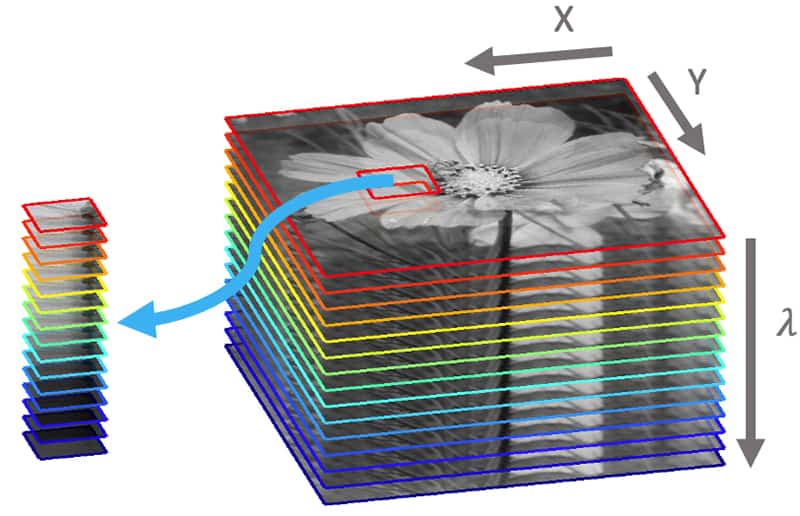1. Overview
In this tutorial, we’ll introduce the field of hyperspectral imaging (HSI). First, we’ll describe the basics of HSI and the process of capturing spectral information in images. Then, we’ll discuss some useful applications of HSI and finally mention some challenges of this technology.
2. Basics of Hyperspectral Imaging
In the past years, we have experienced many exciting technologies in the imaging field. Hyperspectral Imaging (HSI) emerges as a handy tool that enables us to capture rich information across the whole electromagnetic spectrum. This way, we can identify objects and materials far beyond what the human eye or a conventional camera can capture.
In traditional imaging, we compute the reflection intensity of the light in three bands (Red, Green, and Blue) to capture the visual information, resulting in an RGB image. However, helpful information may be hidden in the remaining light spectrum beyond these three distinct bands. That’s where HSI comes in. It involves capturing and analyzing hundreds or thousands of bands across the electromagnetic spectrum, from ultraviolet to infrared.
An intermediate stage between HSI and RGB is Multispectral Imaging (MSI), which captures spectral information in 10 to 100 bands. The rich amount of data in HSI allows for exact analysis, identifying materials by their spectral signatures, which detail how objects interact with light across various wavelengths.
Below, we can see a comparison between HSI and RGB imaging. While in RGB, we capture only three discrete wavelengths of an image, in HSI, we capture a large number of wavelengths, resulting in richer information:

3. How Hyperspectral Imaging Works
Now, let’s delve a bit into how the technology behind HSI works.
Precisely, special sensors are placed on satellites, aircraft, or microscopic devices and capture the light reflected from objects, dividing the light into numerous bands that represent different wavelengths. The final image is a three-dimensional data cube consisting of two spatial dimensions (height and width) like traditional imaging, along with a third dimension containing spectral information.
Each cube slice represents the object’s image at a different wavelength, offering a comprehensive view of its spectral signature. Below, we can see an example of HSI capturing a flower:

4. Applications
The technology of HSI comes with numerous applications. Let’s dig into the most important ones.
4.1. Agriculture
Monitoring a large number of fields is a very difficult task. Farmers leverage the power of HSI to monitor crop health, optimize the use of pesticides, and manage their resources more efficiently. Specifically, by monitoring the fields through HSI, they gain access to very detailed information on the state of the crops in terms of diseases, nutrient deficiencies, and more without having to check every crop manually at all times.
4.2. Environmental Science
Another useful application of HSI is its ability to track specific minerals and chemicals that impact environmental pollution. So, in this way, scientists can capture the atmosphere of Earth through HSI and estimate the degree of environmental pollution or compute the water quality by taking HSI images of an ocean.
4.3. Medicine
In the medical domain, HSI can be very beneficial in identifying cancerous cells in tissues. Specifically, the high precision in capturing the details of a human tissue allows scientists to build better prediction systems that identify if a human tissue contains cancerous cells.
5. Challenges
Despite its benefits, HSI comes with many challenges that we should always consider when we attempt to use this technology.
In particular, HSI generates a vast amount of data that needs a lot of storage and computing power. For example, an RGB image with resolution will have
pixels, while an HSI image with the exact resolution and 1k bands will have 3,072,000 pixels. So, when we use the HSI technology, we should always consider how we’ll save and process this massive amount of data.
6. Conclusion
In this article, we discussed how hyperspectral imaging works. First, we introduced HSI and the technique behind this technology, and then we presented some of its applications and challenges.